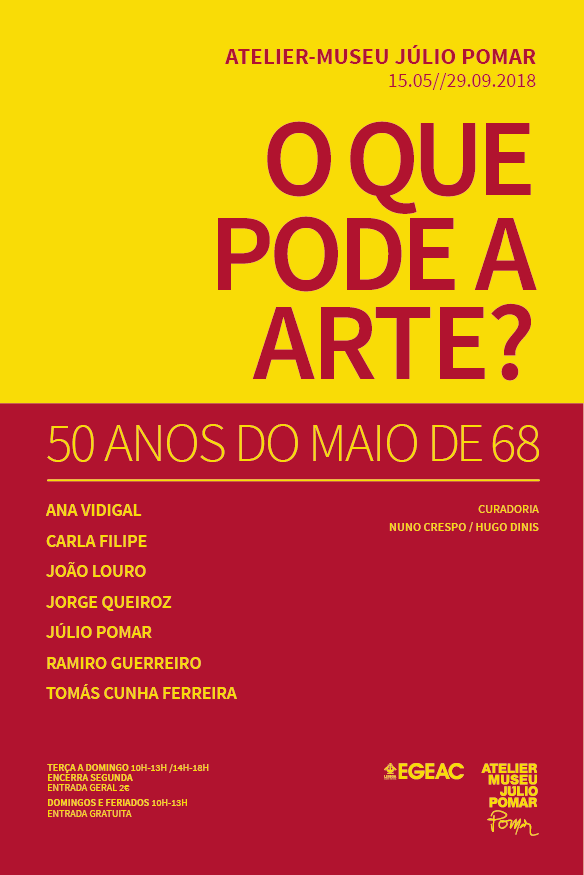
The exhibition ‘What is the power of art? May ’68 – 50 Years On’, curated by Nuno Crespo and Hugo Dinis, with works by Júlio Pomar, Ana Vidigal, Carla Filipe, João Louro, Jorge Queiroz, Ramiro Guerreiro and Tomás da Cunha Ferreira, evokes and commemorates the 50th anniversary of the French student movement. This revolutionary dynamic spread to various sectors of society and proved fundamental in defining contemporary life, albeit less in terms of the legislative and political changes which took place immediately and more due to the way in which the old, established social hierarchy, which was classist and authoritarian, was challenged. May ’68 became the symbol of a new social order, which not only influenced academic relationships, but all social, political, economic and cultural institutions.
The artistic expression which emerged from this student movement is one of its most productive aspects, touching upon cinema, literature and the visual arts. Júlio Pomar, who had been living in Paris at that time since 1963, was not left unmoved by these events, and, inspired by the spirit of 1968, produced a significant set of paintings in which he revives a certain idea of the link between art and politics which strongly influenced him in the 1940s.
Therefore, ‘What is the power of art? May ’68 – 50 Years On’, as well as demonstrating the way in which Pomar directly portrays the student movements, seeks to reflect on the political concerns which marked the artist’s work from its emergence in the 1940s, and which he never abandoned. According to the artist himself, in conversation with Helena Vaz da Silva, and quoted by Irene Flunser Pimentel [Júlio Pomar. O Pintor no Tempo, Documenta, Lisbon, 2018], it was “the spectacle of a city which debates, which is alive, I’d never seen this in my life and it was unforgettable” which stayed with him the most. It is this idea of life which his paintings depict so successfully.
‘What is the power of art? May ’68 – 50 Years On’ is not a historical exhibition, instead questioning the way in which art is contaminated by politics, and how this contamination is a territory that influences artists so strongly. Alongside Pomar and the paintings which he produced at such different times as 1946 and 1968, the exhibition presents works by Ana Vidigal, Carla Filipe, João Louro, Jorge Queiroz, Ramiro Guerreiro and Tomás da Cunha Ferreira, which not only enter into dialogue with the painter’s world, but which, most importantly, are influenced by that spectacle of a city which comes alive as its citizens spill out into the streets and become a single mass with a common voice. In an informal conversation with Sara Antónia Matos and Pedro Faro which touched upon the 50th anniversary of May ’68, Júlio Pomar observed that “the shields of politics were large, round and opaque, while the police truncheons were narrow, straight lines”. What is the power of art in response to this?